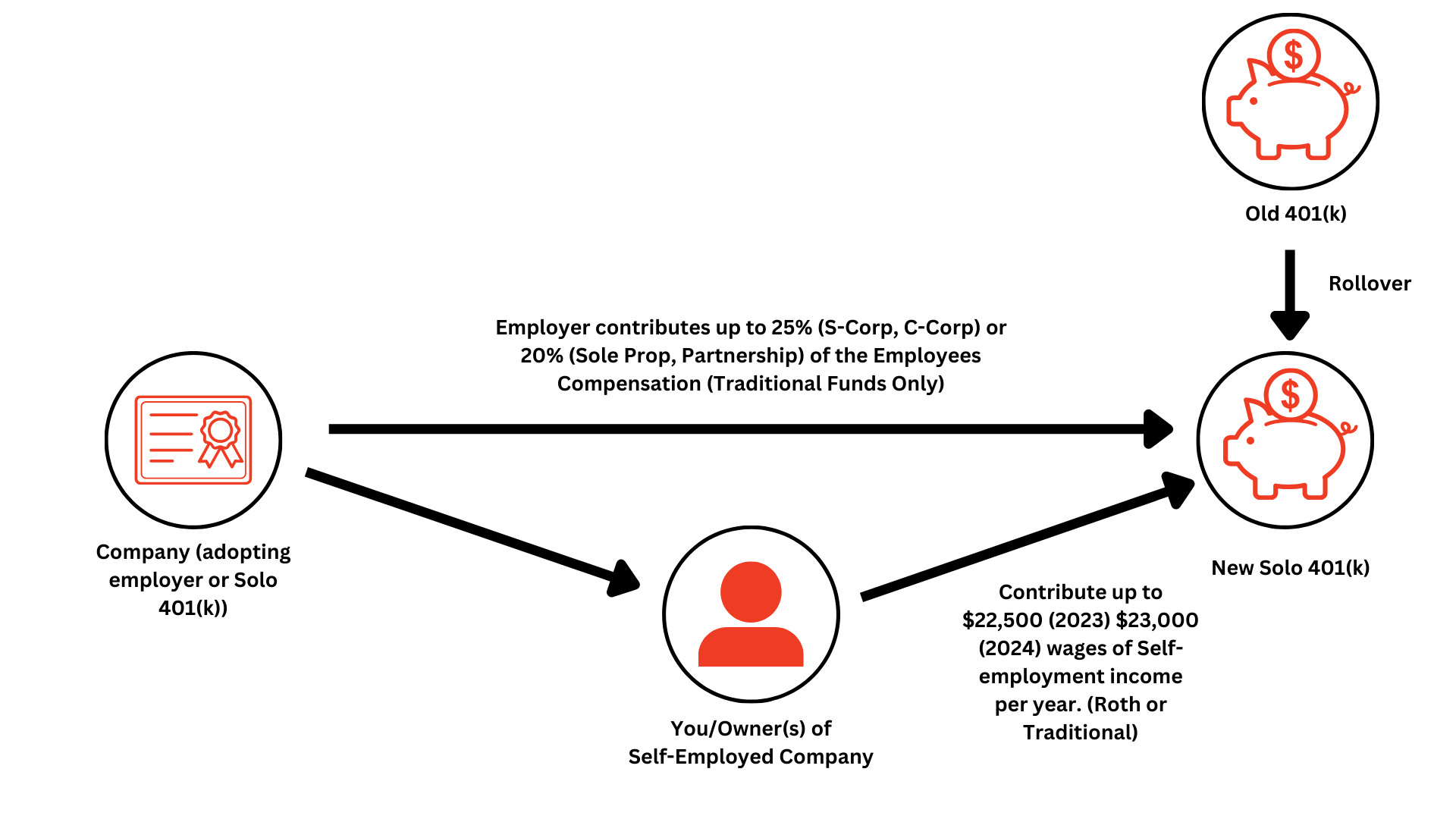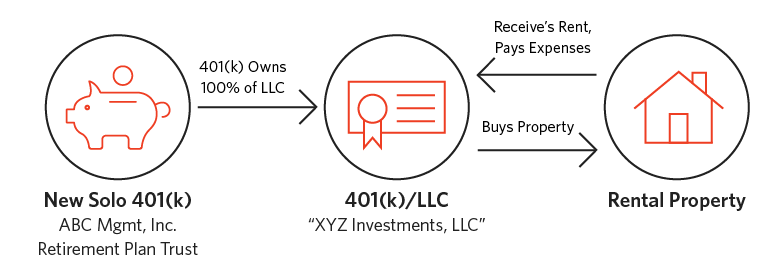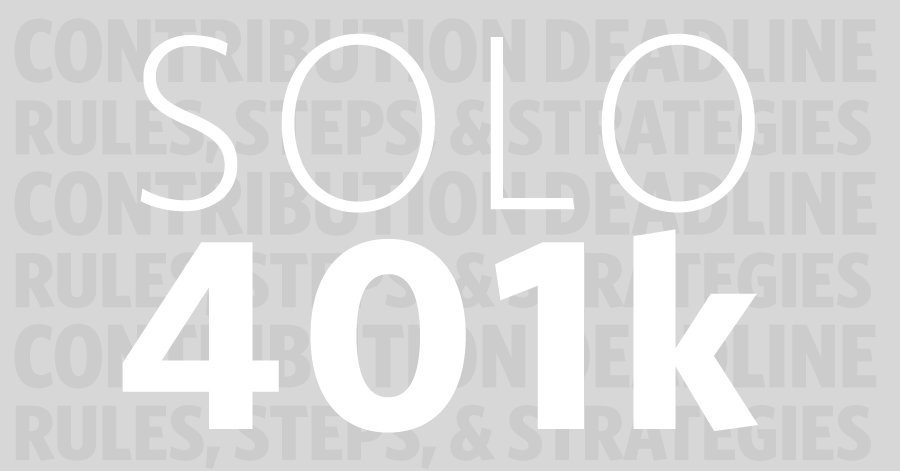Solo 401(k)
Self-Direct Your Solo 401(k). Invest in What You Know.
Take Control of Your Retirement™
Getting started with a Solo 401k
4 Key Points to Consider
When Using a Solo 401(k)
1. Over $60K In Annual Contributions
![]() A solo(k) can receive over $60K annually in new contributions and is an optimal savings tool for self-employed persons.
A solo(k) can receive over $60K annually in new contributions and is an optimal savings tool for self-employed persons.
2. Self-Directed and Self-Trustee
3. Must be Self-Employed with No Employees
4. Roth & Traditional Accounts
Fee Schedule Solo 401k – Custodial
Fee Schedule Solo 401k – Annual Compliance Plan
Solo 401k Participant Loan Request
Set Up a FREE Appointment with a Solo 401(k) Specialist
With Ryan Hyde for a 30-minute Quick Start Call to set up a new Solo 401(k)
With Solana Raybon for a 30-minute Quick Start Call to set up a new Solo 401(k)
Schedule with Markus Mollica for a New Account Call to set up a Self-Directed IRA.
Schedule with Brian Martinez for a New Account Call to set up a Self-Directed IRA.
Do You Qualify For a Solo 401k?
Solo 401(k) Account: (Can have Traditional and Roth Accounts) Opening Solo 401(k) Next Steps: The Solo 401(k) is an Employee Benefit Plan that is exclusively for business owners that have no full-time employees besides themselves and a spouse. The Plan is adopted by a company, not an individual, that has earned ordinary income from the sale of goods or services.
Step 1: Select the plan that works best for you
Full Service – $995
- Includes 60-minute consultation with a KKOS Associate Attorney
- Plan Set-Up with IRS-Approved Documents and Plan EIN
- How-to Plan Binder
- Schedule Your Attorney Consultation Now!
Docs Only – $495
- Includes Plan Set-Up with IRS Approved Documents and Plan EIN
Restatement – $495
- Includes Plan Set-Up with IRS Approved Documents and Plan EIN (as necessary)
Step 2: Select your annual account
Custodial Account Option
$395/annually for your first account
$295/annually for each additional Solo 401k account within your plan.
- Receipt of IRS Plan Amendments so that your plan stays in compliance with the IRS and the DOL
- Directed Trust Company will handle your record keeping and the IRS Filings (5500-EZs & 1099-Rs)
- You can obtain checkbook control via a Trust Checking Account or Investment Entity
Annual Compliance Plan (ACP)
$150/annually
- Receipt of IRS Plan Amendments so that your Plan stays in compliance with the IRS and the DOL
- Immediate checkbook control via a Trust Account at a bank of your choice
- You will be responsible for your own record keeping and IRS Filings
Solo 401(k) Plan Application
Solo 401(k) FAQ Sheet
Learn more about a Solo 401k
What Account Type is Best?
Please use the table and resources below to help compare
between a Solo 401(k) or a Self-Directed IRA
|
SOLO 401(k) |
SELF-DIRECTED IRA |
|
|---|---|---|
|
Qualification |
Must be self-employed with no Full-Time Employees (besides yourself and a spouse). |
Self-Employment not required – must have earned income to contribute. |
|
Contribution Limits |
Max Annual Contribution = $69,000 (2024) |
Max Annual Contribution = $7,000 ($8,000 if over 50). |
|
Custodian Requirement |
You can be the Trustee and Administrator – No Custodian required but one may be named |
You MUST have a 3rd Party Custodian. |
|
Rollover Limitations |
Can rollover most retirement accounts except Roth IRA and 401k with a current employer. |
Can rollover existing retirement accounts. |
|
Loans |
Can borrow up to $50,000.00 from the 401(k) it is called a Participant Loan**. |
Cannot borrow from the IRA. |
|
UDFI Tax |
Leveraged Real Estate is NOT subject to UDFI. |
Leveraged Real Estate IS subject to UDFI Tax. |
|
Consequence of Prohibited Transaction |
15% excise tax if prohibited transaction occurs. |
Entire IRA is distributed if Prohibited Transaction occurs. |
Annual Maintenance Options
Choose the pricing plan
that best fits your personal situation
|
ANNUAL COMPLIANCE PLAN |
FULL SERVICE CUSTODIAL |
|
|---|---|---|
|
Trustee/Plan Administrator |
Client is Trustee and Plan Administrator. |
Client is Trustee and Plan Administrator. |
|
Custodian |
No Custodian is named. |
Directed Trust Company named as Custodian. |
|
Bank Account Option |
Client goes to a bank of their choice to set-up a Trust Checking Account. |
Transactions will be made through an account held with Directed Trust Company. |
|
Checkbook Control |
Client has immediate checkbook control through their Trust Checking Account. |
Client can have a bank account for checkbook control funded from your Custodial Account. |
|
Record Keeping Responsibilities |
Client is responsible for all record-keeping and IRS filings required of the plan (ie. 5500 EZ or 1099-R**) |
Directed Trust Company handles all recordkeeping and IRS filings required of the plan. |
|
Annual Fee |
$150.00 Annually |
$395 for the first account under the plan, $295 for subsequent accounts |
VIDEOS AND ARTICLES ON SOLO 401(K) ACCOUNTS:
Definitions, Deadlines
and Funding Options
|
5500 EZ |
The administrator of the plan is required to file form 5500 EZ with the IRS if their Solo 401(k) plan has a combined value of assets over $250,000. For plans on a calendar year, the deadline for this filing is July 31st. |
|
1099-R |
Issued anytime money leaves a retirement plan (account) or if a Roth Conversion occurs. The deadline for this filing is January 31st. |
|
Participant |
A Loan that allows account holders to take a loan up to $50,000.00 or 50% of available plan balance. Interest Rate is Prime +2%. The loan must be paid within 5 years and payments must be made at least quarterly. |
|
New Solo 401(k) Set-Up Deadline |
The Solo 401(k) Plan must be established by the Adopting Entity’s Tax Deadline. |
|
Employee Contribution Reporting Deadline |
You must report your Employee Contributions via W-2, which is due January 31st, but you have until the company’s tax return is filed to make the contributions. |
|
Contribution Deadline for Sole Prop, Single-Member LLC, or C-Corp |
April 15th (Can be extended by filing an extension) |
|
Contribution Deadline for S-Corp or Partnership LLC |
March 15th (Can be extended by filing an extension) |
FUNDING VIA CONTRIBUTIONS OR ROLLOVERS

401(K)/LLC

Articles On How To
Self-Direct Your Solo 401(k)
2023 Solo 401(k) Contribution Deadlines: Rules, Steps, and Strategies
As we near the close of 2023, embark on a journey of financial empowerment! For Solo 401(k) owners, understanding the exciting deadlines and regulations that shape your contributions is key..
Self-Directed IRA Versus Solo 401(k)
Many self-directed investors have the option of choosing between a self-directed IRA or a self-directed solo 401k….


Solo K Form 5500 Tax Filing and Five-Point Compliance Checklist
Solo 401(k)s have become a popular retirement plan option for self-employed persons….




